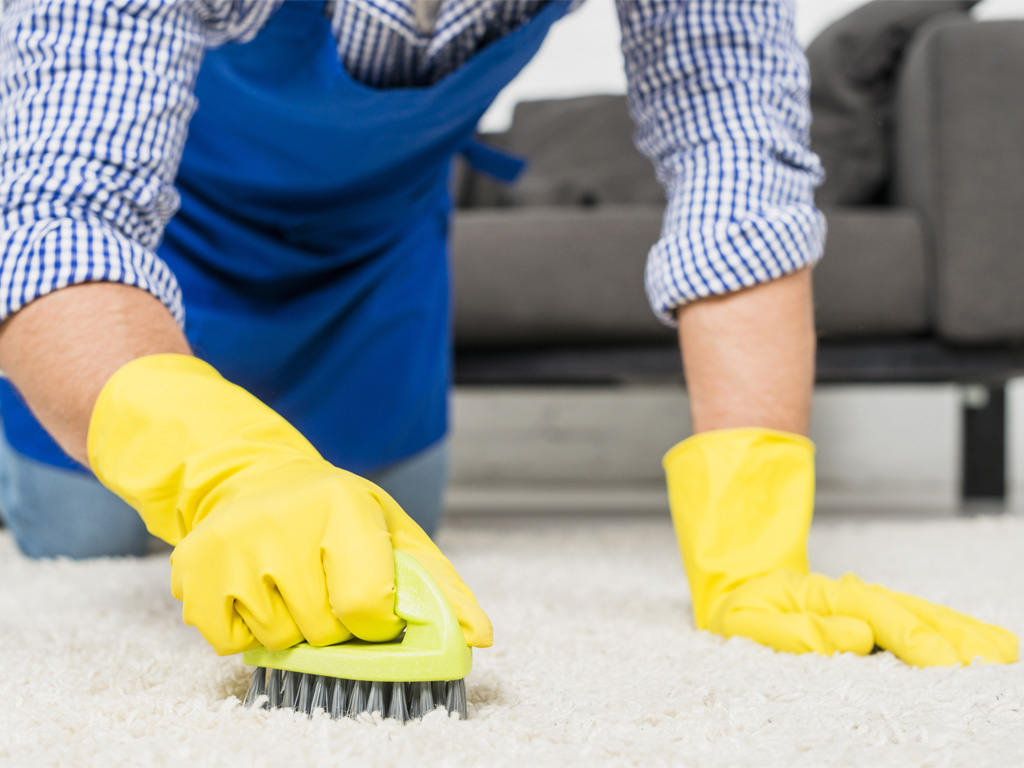
Spring cleaning is the perfect time to focus on thoroughly cleaning the carpets in your home or apartment. A carpet is a beautiful addition to your interior and a practical element that provides comfort and insulation. But if you want your home to truly shine, it’s time to roll out the red carpet for a deep clean—dust, dirt, and stains can take a toll on its appearance and longevity.
Let's take a look at different ways to clean carpets – from home methods to professional services. We’ll find out how to remove common stains and also explain what should definitely not be used for carpet cleaning.
Where Do Carpets Come From?
Carpets are one of the oldest home accessories, with a history that dates back to ancient Iran, the origin of the famous Persian carpets. The first carpets, which were woven entirely by hand, date back to the 5th century BC. In Europe, carpets became especially popular during the Middle Ages, often serving as a luxury item for the aristocracy. In the 19th century, with the rise of industrial production, carpet prices dropped, making them more accessible to ordinary people.
Today, there are various types of carpets, ranging from traditional hand-woven ones to modern synthetic versions. They are made from different materials, such as wool, synthetic fibres (nylon, polyester, polypropylene), or natural materials (bamboo, coconut).
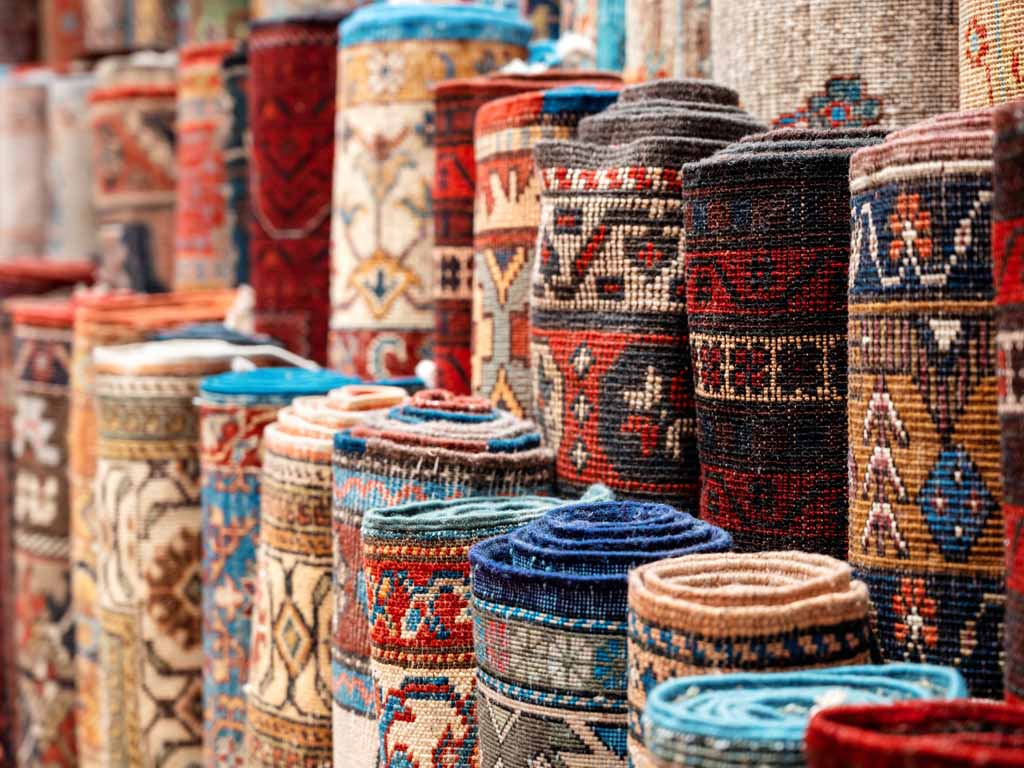
Types of Carpets
Before you start cleaning, it's important to know the type of carpet you have. Different materials and fabrics may require different cleaning approaches.
- Wool Carpet
Wool is a natural material that is soft, durable, and has good insulating properties. However, it is prone to absorbing moisture, so it's important to be cautious when cleaning to avoid damaging the fibres. - Nylon Carpet
Nylon is a synthetic fibre that is durable and easy to clean. Nylon carpets are commonly used in households because they are resistant to stains and wear. - Polyester Carpet
Polyester is an affordable material used in carpet manufacturing. It is less durable than nylon but still very popular in households. - Natural Fibre Carpet
These carpets can be made from materials such as jute, bamboo, or coconut. They are eco-friendly but require special care and cleaning.
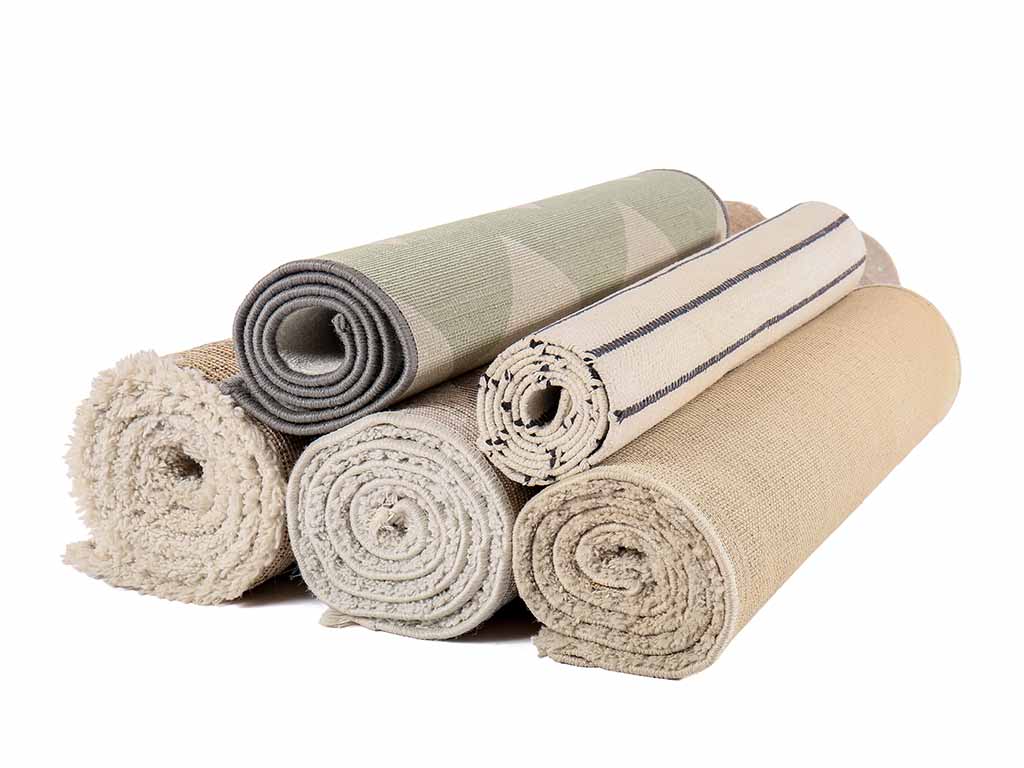
Carpet Cleaning Options
There are various ways to clean carpets – from traditional methods that varied by season to professional services.
Home Cleaning
Home cleaning is the easiest way to take care of your carpet throughout the year. However, once a year, you should treat your carpets to professional steam cleaning. How to clean your carpet at home? There are several proven methods:
- Vacuuming
Regular vacuuming is essential for carpet care. It helps remove dust, dirt, and small particles that could damage the fibers over time. Vacuum your carpet at least once a week, especially in high-traffic areas. - Removing Small Dirt
If you notice small dirt particles on the carpet that the vacuum cleaner hasn't removed, use special cleaning brushes that come with vacuum cleaner attachments. You can also use homemade cleaning solutions depending on the type of stain. - Homemade Cleaning Solutions
For tougher dirt, use a simple solution: Mix water with a small amount of vinegar or baking soda. Do not mix vinegar and baking soda together, as they react in a very "explosive" way. Vinegar with water and baking soda with water help remove odours and small dirt particles. For stain cleaning, you can also use a mixture of water and a mild cleaning agent (e.g., dishwashing liquid or shampoo for natural fibres). - Hand Stain Cleaning
If a liquid that may cause a stain spills on your carpet, wipe it up immediately. Use paper towels or cloths that quickly absorb the liquid. Place the cloth on the stain and never scrub the liquid. Scrubbing would only push it deeper into the carpet fibres and make the situation worse. Identify the stain and use a cleaning solution that will help remove it.
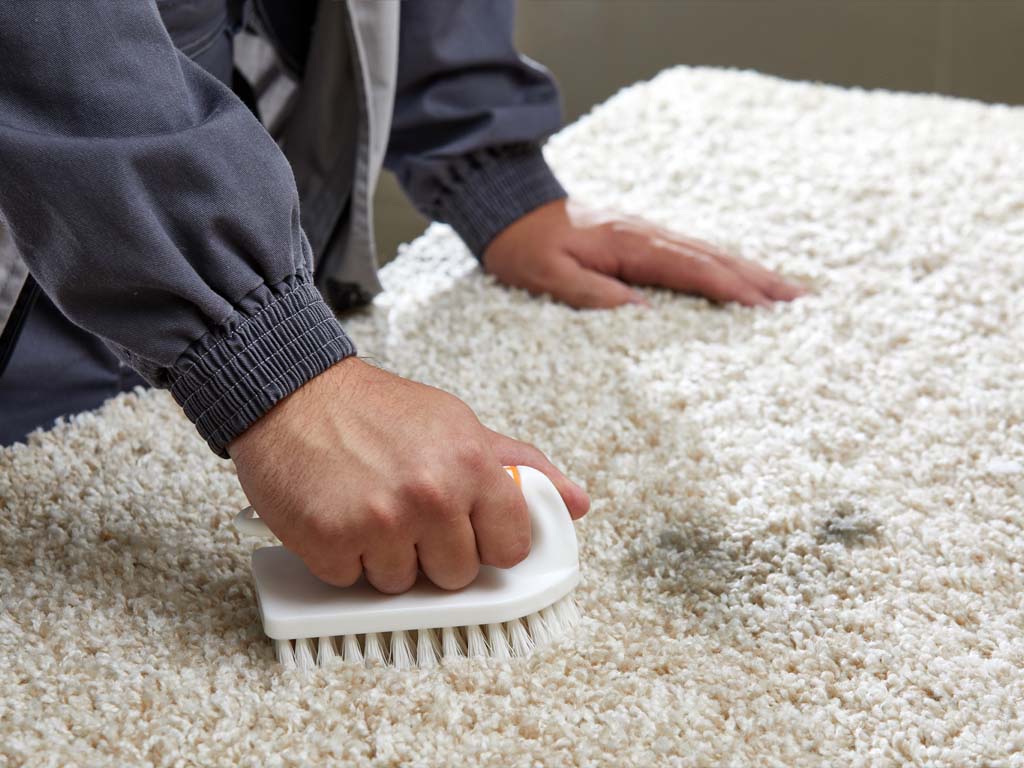
Professional Cleaning
If your carpet has stubborn stains or requires more thorough cleaning, you may consider professional cleaning. Professional cleaning services use special cleaning products and machines that can effectively remove dirt and restore the appearance of the carpet. The benefits of professional cleaning include:
- Thoroughness,
- Expertise,
- Access to advanced techniques such as steam cleaning or water extraction.
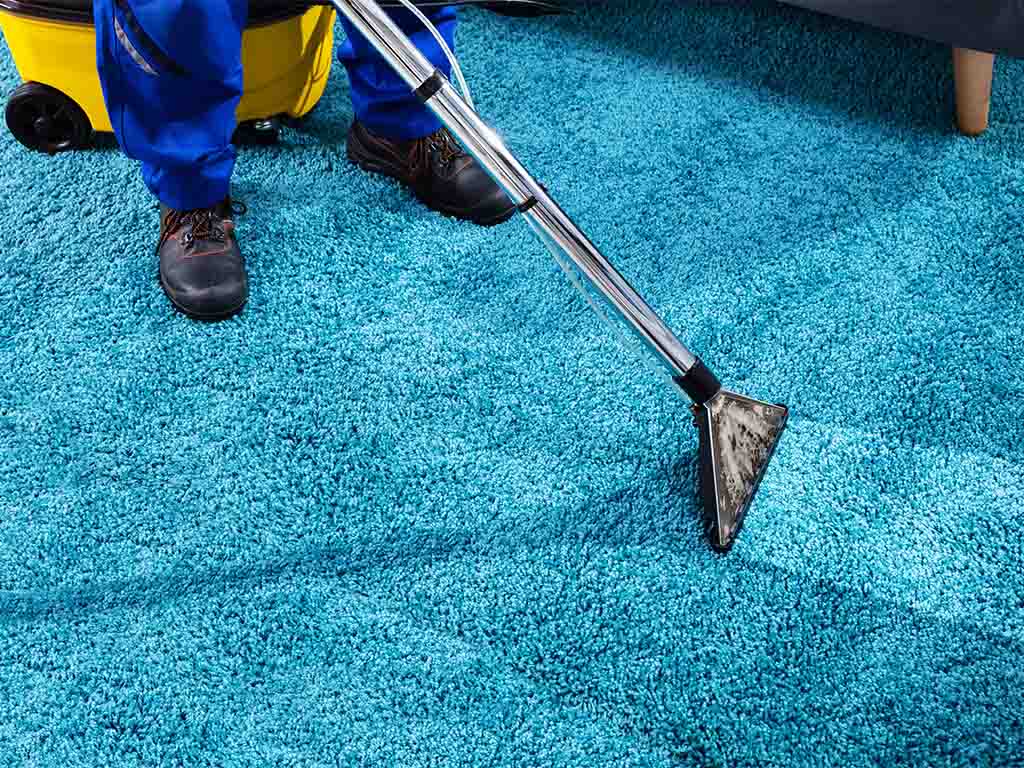
Removing Common Stains
Before deciding on which method to use, it's important to know how to remove various common stains from your carpet.
- Coffee or Tea Stains
If coffee or tea spills on the carpet, immediately pour cold water onto the stain to dilute it. Then apply a solution of vinegar and water (1:1) and gently press a cloth onto the stain. Repeat until the stain disappears. - Wine Stains
Quickly sprinkle salt on the stain to absorb the liquid. Then gently clean the stain with a solution of baking soda and water. You can also use a regular stain remover or a special wine cleaner if you deal with such stains more often. - Greasy Stains
For greasy stains, use a powder to absorb the fat (such as cornstarch). Then, gently clean the surface with a warm solution of water and a mild detergent. - Paint Stains
Paint stains are tough but not impossible to remove. Use a special paint cleaner or gently dab the stain with alcohol, taking care not to discolour the surrounding fibres. - Blood Stains
To remove blood stains from a carpet, it is best to use cold water and gently blot the affected area. Mix water with salt, use a stain remover, or try cleaning the stain with baking soda. After successfully removing the visible discolouration, be sure to dry the area with a clean cloth.
For all stains, it is important to act quickly. The longer a stain sets, the harder it is to remove.
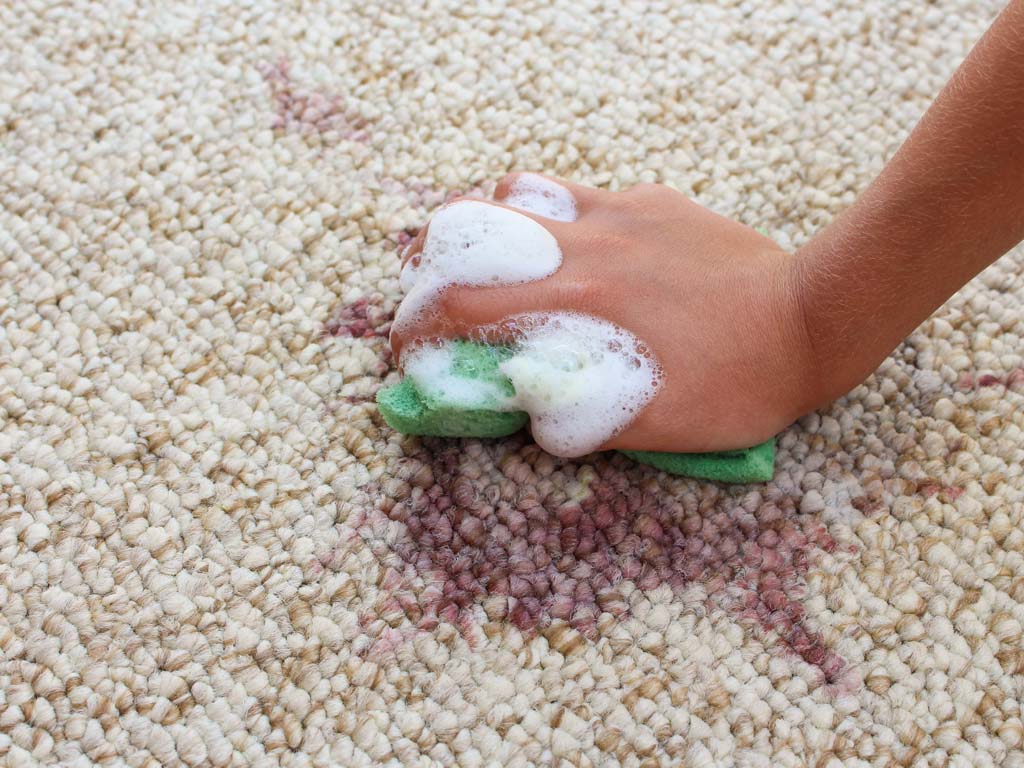
What Never to Use for Cleaning Carpets
Some cleaning products and methods can damage your carpet. While some of them are part of popular cleaning hacks, don’t be fooled—avoid using these substances:
- Chlorine bleach – This cleaner can cause carpet colours to fade or completely destroy its fibres.
- Powder cleaners with abrasive particles – These powders can damage the fibres and make the carpet lose its original appearance.
- Too much water – Excessive water can weaken the fibres, cause the carpet to shrink, or lead to mold growth.
- Harsh chemicals – Some commercial cleaning products can damage the carpet and cause discolouration.
Carpet Cleaning the Grandma’s Way
It’s snowing and freezing – time to take the carpets outside!
Even though global warming no longer allows us to do this as often, our grandmothers knew that carpets should always be cleaned on a properly icy day. All it took was rolling up the carpet in the morning, leaving it outside for a few hours with its fibers facing the snow, and beating it flat. Then, the carpet was hung up, shaken off again to remove the snow, and left to freeze until nightfall. In true freezing temperatures, the carpet never got wet this way. However, if the snow melted and seeped into the fibers, this cleaning method could do more harm than good.
Hot Days and Dripping Over the Fence
During hot days, our grandmothers enjoyed washing carpets by the streams or in their backyards. Using water, soap, and a stiff brush, they scrubbed, rinsed, and squeezed out excess water. Once the carpets had dried a little, they were thrown over gates, fences, or anywhere sturdy enough to support their soaked weight. Then, it was just a matter of waiting until the carpets were dry as a bone.
No matter how you clean your carpets, don't forget that a home is also about beautiful scents. Along with clean and fragrant carpets, treat yourself to a room perfume or a reed diffuser. After all, life is always better when it smells good.
